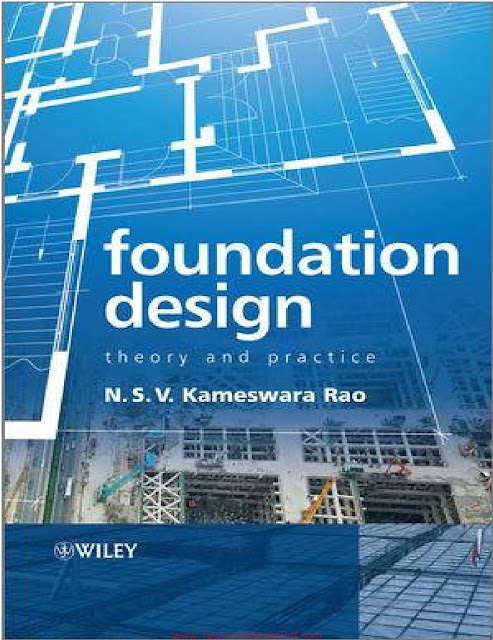Foundation Design Theory And Practice
It Is Well Realized That ‘Geotechnical Engineering Is An Engineering Science But Its Practice Is An Art!’ Foundations Are Essential Interfaces Between The Superstructure And The Supporting Soil At The Site Of Construction. Thus They Have To Be Designed Logically To Suit The Loads Coming From The Superstructure And The Strength, Stiffness And Other Geological Conditions Of The Supporting Soil. With An Enormous Increase In Construction Activities All Over The World, Structures And Their Foundations Have Become Very Sophisticated While The Supporting Soil Has To Accommodate These Variations And Complexities.
This Book Focuses On The Analysis And Design Of Foundations Using Rational As Well As Conventional Approaches. It Also Presents Structural Design Methods Using Codes Of Practice And Limiting State Design Of Reinforced Concrete (RCC) Structures. This Book Was Evolved From The Courses On Foundation Engineering Taught By The Author Formerly In The Indian Institute Of Technology Kanpur, India And Presently In The School Of Engineering And IT, Universiti Malaysia Sabah, Kota Kinabalu, Malaysia. Accordingly, The Contents Of The Book Are Presented In A User-Friendly Manner That Is Easy To Follow And Practice.
The Book Consists Of 12 Chapters Plus Appendices. Chapters 1–3 Present The Engineering Properties, Tests And Design Parameters Needed For The Analysis And Design Of Foundations. Chapter 4 Discusses The Conventional And Rational Approaches For Designing Different Types Of Shallow Foundations, Including Rafts. Methods For Exact Solutions Using Beams And Plates On Elastic Foundations Are Presented In Chapter 5. Numerical Methods Of Analysis Such As Finite Difference Method (FDM) And Methods Of Weighted Residuals (Galerkin, Least Squares, Etc.) Are Discussed In Chapter 6. The Finite Element Method (FEM) For Foundation Analysis Is Explained In Chapter 7.
The Design Criteria For Shallow Foundations Are Presented In Chapter 8 While Actual Design Principles Are Given In Chapter 12 Along With Structural Design Details. Chapter 9 Discusses The Design And Construction Of Deep Foundations Such As Piles, Large Diameter Drilled Piers, Pile Raft Systems And Non-Drilled Piers/Caissons. The Construction Aspects And Design Of Pile Foundations Are Presented In Chapter 10. The Principles
Of Machine Foundation Design Are Discussed In Chapter 11. Chapter 12 Summarizes The Important Provision Of RCC Design Codes And Comparative Features Of Commonly Used Codes Such As The Indian Code, Euro Code, And ACI Code. As Mentioned Earlier, Detailed Examples Of Structural Design Of Shallow Foundations Are Also Given In This Chapter.
Special Fatures
Every Effort Has Been Made To Include The Background Material For Easy Understanding Of The Topics Being Discussed In The Text. Both Conventional And Rational Approaches To Analysis And Design Are Included. For Example, The Provision Of RCC Codes, Pile Design And Construction, Vibration Theory And Construction Practices, As Well As Tests For Obtaining The Design Parameters Are Included In The Respective Chapters.
Examples Of Structural Design Of Foundations Are Also Discussed In Detail. Comparative Features Of Different RCC Codes Relevant To Foundation Design Are Also Examined To Help Designers. In Addition, Several Examples Have Been Worked Out To Illustrate The Analysis And Design Methods Presented. Also, Assignment Problems Are Given At The End Of Each Chapter For Practice. The Author Hopes That This Book Will Be A Very Useful Resource For Courses On Foundation Engineering And Design, Soil-Structure Interaction, And So On, At Undergraduate As Well As Postgraduate Levels, Besides Being Helpful To Research, Development And Practice.
